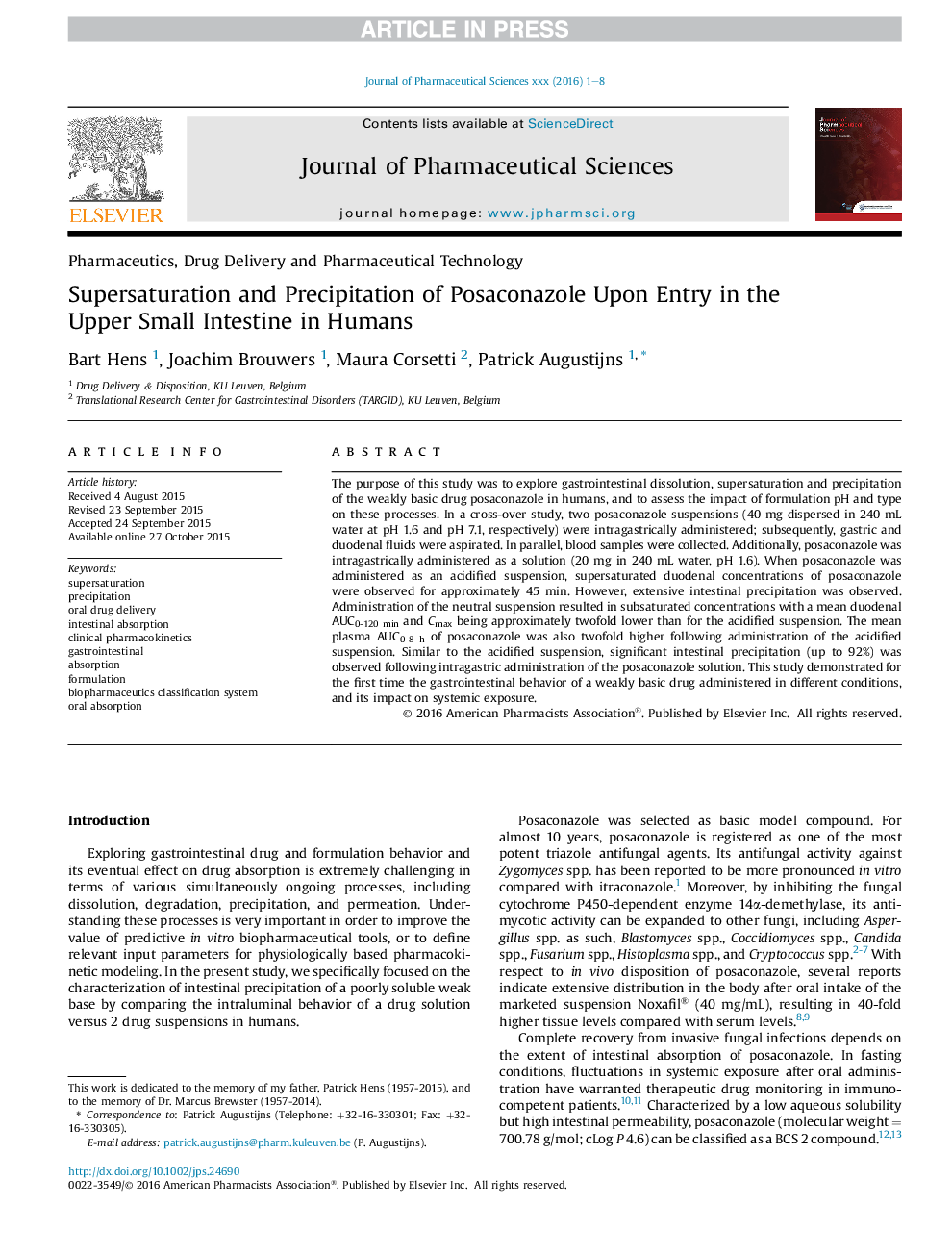| Article ID | Journal | Published Year | Pages | File Type |
|---|---|---|---|---|
| 8514921 | Journal of Pharmaceutical Sciences | 2016 | 8 Pages |
Abstract
The purpose of this study was to explore gastrointestinal dissolution, supersaturation and precipitation of the weakly basic drug posaconazole in humans, and to assess the impact of formulation pH and type on these processes. In a cross-over study, two posaconazole suspensions (40 mg dispersed in 240 mL water at pH 1.6 and pH 7.1, respectively) were intragastrically administered; subsequently, gastric and duodenal fluids were aspirated. In parallel, blood samples were collected. Additionally, posaconazole was intragastrically administered as a solution (20 mg in 240 mL water, pH 1.6). When posaconazole was administered as an acidified suspension, supersaturated duodenal concentrations of posaconazole were observed for approximately 45 min. However, extensive intestinal precipitation was observed. Administration of the neutral suspension resulted in subsaturated concentrations with a mean duodenal AUC0-120 min and Cmax being approximately twofold lower than for the acidified suspension. The mean plasma AUC0-8 h of posaconazole was also twofold higher following administration of the acidified suspension. Similar to the acidified suspension, significant intestinal precipitation (up to 92%) was observed following intragastric administration of the posaconazole solution. This study demonstrated for the first time the gastrointestinal behavior of a weakly basic drug administered in different conditions, and its impact on systemic exposure.
Keywords
Related Topics
Health Sciences
Pharmacology, Toxicology and Pharmaceutical Science
Drug Discovery
Authors
Bart Hens, Joachim Brouwers, Maura Corsetti, Patrick Augustijns,
